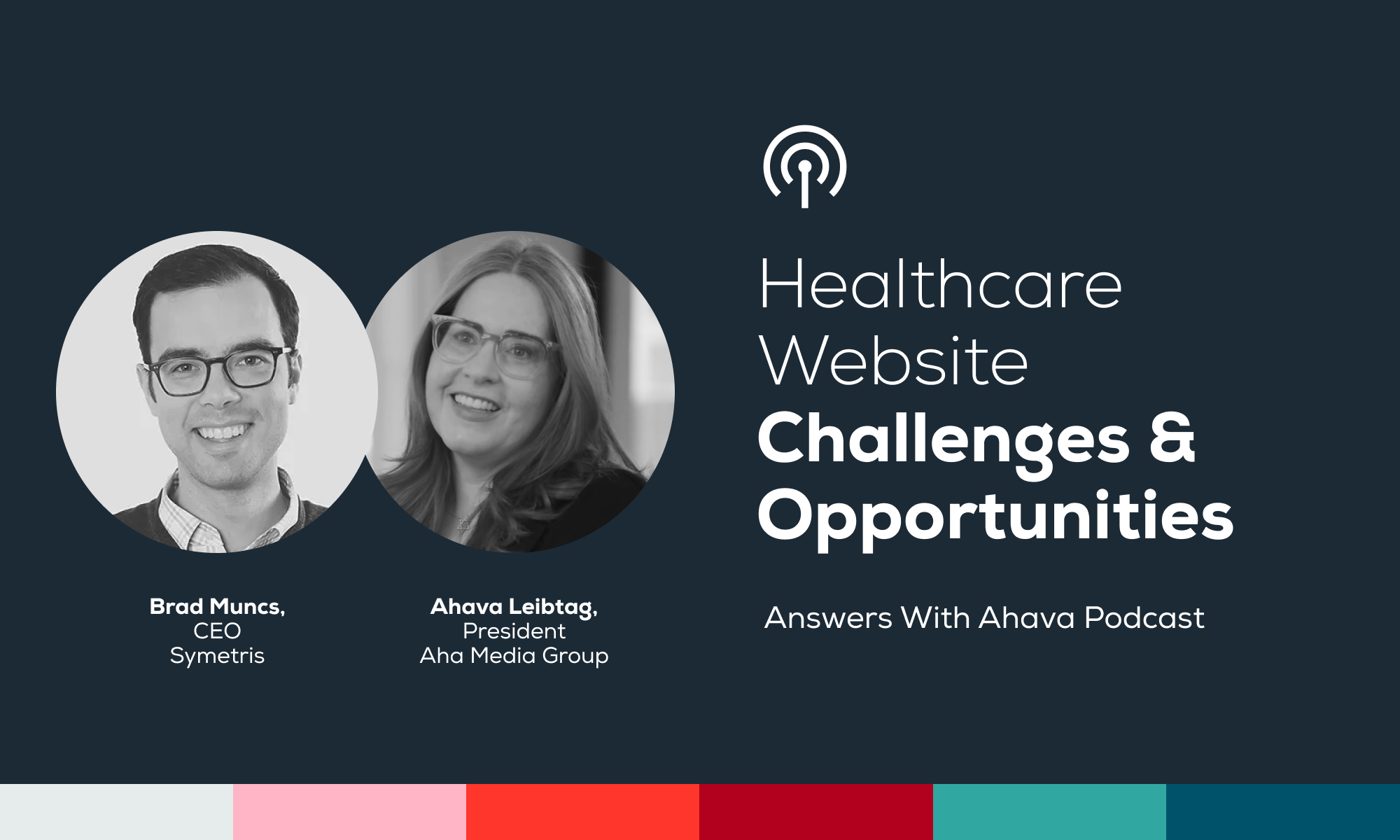How to Fix What's Quietly Costing You Patients
Many hospital websites suffer from small, unseen issues that kill conversions. Learn how governance, structure, and diagnosis-first thinking can change the game.

Insights from a conversation with Ahava Leibtag, President of Aha Media Group
Healthcare websites are expected to do more than ever: attract patients, explain services, convert intent into bookings, and make it all look easy. Most teams I meet are juggling shrinking budgets, growing expectations, and a constant parade of “urgent” digital priorities.
But here’s what might surprise you: even in well-resourced systems, small execution gaps — misused templates, outdated governance, fragmented editing — quietly drag down performance. These aren’t rare problems. They're everywhere. You just might not see them until someone points them out.
Ahava Leibtag recently invited me to an episode of Answers with Ahava + Friends. When we spoke, what stood out was how often hospitals struggle with simple, fixable problems that never get prioritized.
This article is about solving the ones that matter. The ones quietly costing you conversions and trust.
Diagnose before you redesign
A request comes in: “We need to add a blog.”
Then another: “Let’s move the search bar higher.”
Soon it’s: “Can we personalize the homepage for every user?”
Each one sounds reasonable — but they’re often chasing the wrong issue.
The fix doesn’t work if the diagnosis is off. We’ve seen hospitals ask for features that seem urgent, only to realize they’re reacting to symptoms, not root causes.
The better move? Slow down and ask:
- What’s actually broken?
- What’s the patient trying to do?
- What’s blocking them?
We worked with a client recently whose content teams kept misusing templates. It wasn’t a design problem — it was a governance problem. Once we improved how content types were structured, the support tickets dropped and page performance improved. Same CMS. Smarter use.
A website can’t be strategic if it’s being edited at random. Diagnosing first makes everything else easier — and cheaper.
Governance is where digital maturity really shows up
Internal misalignment doesn’t show up in the code — it shows up in the user journey.
In one example Ahava shared, a hospital's specialty care page had a “Request a Specialist” button buried where banner blindness guaranteed it would be missed. Meanwhile, the center of the page featured a call to book a primary care appointment. The content was written for one purpose; the template was built for another.
These breakdowns happen when marketing, clinical teams, and access operations don’t share a governance model. Everyone adds content. No one owns experience.
These gaps frustrate your web team, slow campaigns, waste marketing dollars, and erode trust with clinical and IT partners. For healthcare leaders, digital maturity isn’t just about building new features. It’s about building systems of accountability that protect marketing investment and make every update purposeful.
That’s where a structured evolution model comes in: ongoing governance, training, and optimization that keep your site performing long after launch.
Readable, structured content wins. For humans and machines
Every healthcare marketer I’ve spoken to this year is worried about AI’s impact on SEO. And rightly so. Search traffic is shifting fast, and the way patients discover content is evolving.
But while everyone’s scrambling to feed the algorithm, there’s a more durable advantage: making your content easier for humans and bots to parse.
A few starting points:
- Structure your content for scannability: clear headings, short paragraphs, no jargon.
- Use schema.org metadata to help AI and search engines extract your content’s intent.
- Review your templates to ensure consistency across similar page types.
This isn’t busywork. It’s the kind of technical clarity that makes it easier for AI and search engines to surface your content — and easier for patients to act on it.
Trying to outsmart Google with keyword stuffing didn’t work
Final Thought: The transformation starts with the basics
Fixing your website doesn’t always mean rethinking the strategy. Sometimes, it just means tightening the execution.
Small fixes are easier to ignore. But they’re also easier to make. And often, they’re the ones that matter most.
Reach out to our team and find out how we can support you and leverage the digital assets you already have.
